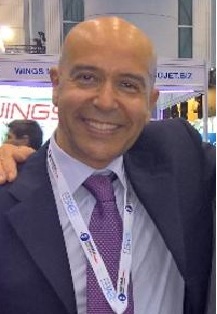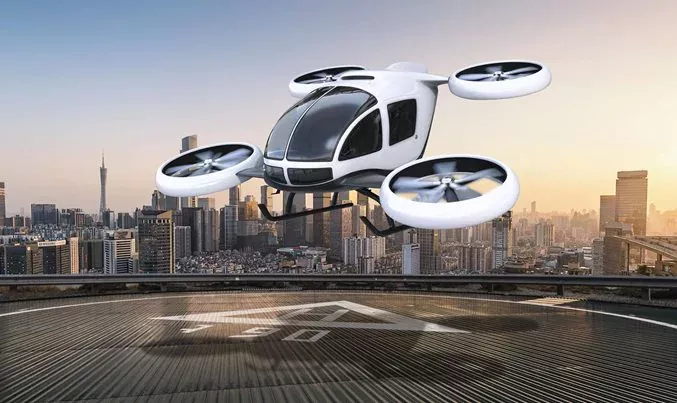Details
More Products & Services
Products & Services
Home - Aviation Group Marketing
Aviation Week Network
120 data points on over 156,000 commercial and business aviation aircraft, including military transports. Discover the most trustworthy resource for the complete aircraft history, plus ad hoc reports, month-over-month trend analysis and details on expected deliveries through 2050.
Aerospace | Aviation Week Network
Aviation Week Network
https://aviationweek.com/themes/custom/particle/dist/app-drupal/assets/awn-logo.svg
People

Andrea Rossi Prudente
Aviation Week Network

Becca Balmes
Aviation Week Network

Belinda Tan
Aviation Week Network

Brian Everstine
Aviation Week Network
Editor

Eddie Krankowski
Aviation Week Network
Assistant Manager, Tradeshows

erving dockery
Aviation Week Network

Lisa Tan
Aviation Week Network
Senior Marketing Manager

Mark Thomas
Aviation Week Network
Description
Urban air mobility (UAM) developers are facing a third successive year of declining funding, threatening their ability to achieve manufacturing capability, implement an aftermarket support network or even reach type certification, according to a new report from McKinsey.
The consultancy reported that funding for future air mobility (FAM) applications, of which UAM and eVTOL technologies are usually the largest part, had fallen from a peak of $6.8 billion in 2021 to $3.9 billion in 2023, and is only at $2.3 billion so far this year.
“eVTOL players will also need funds to develop manufacturing and supply chain capabilities, which are often quite capital intensive,” wrote McKinsey.
It added: “Some leading eVTOL companies are getting close to commercialization…yet most of the players will require additional funding to complete the development, prototyping, and testing required for type certification, which typically requires $1 billion to $2 billion.”
One reason for optimism is the healthy backlog of orders for FAM aircraft and powertrains, which now numbers 35,500 units valued at $168 billion.
However, although, this indicates a strong market for FAM, such numbers remain somewhat notional given the challenges facing many of the developers to reach type certification.
Furthermore, these orders have not yet attracted enough pre-delivery payments to bridge the significant funding gap for FAM.
“New orders alone will not solve all financial needs for FAM players, however. As order backlogs continue to grow, OEMs will need to invest in manufacturing infrastructure and internal capabilities to achieve efficient full-scale production. Partnerships with aerospace and automotive incumbents can improve the learning curve, but new production facilities, machinery, skilled labor, and other capital requirements will make healthy balance sheets even more critical,” noted McKinsey.
For more information about the development of future propulsion technologies, see the forthcoming Engine Yearbook 2025.
The consultancy reported that funding for future air mobility (FAM) applications, of which UAM and eVTOL technologies are usually the largest part, had fallen from a peak of $6.8 billion in 2021 to $3.9 billion in 2023, and is only at $2.3 billion so far this year.
“eVTOL players will also need funds to develop manufacturing and supply chain capabilities, which are often quite capital intensive,” wrote McKinsey.
It added: “Some leading eVTOL companies are getting close to commercialization…yet most of the players will require additional funding to complete the development, prototyping, and testing required for type certification, which typically requires $1 billion to $2 billion.”
One reason for optimism is the healthy backlog of orders for FAM aircraft and powertrains, which now numbers 35,500 units valued at $168 billion.
However, although, this indicates a strong market for FAM, such numbers remain somewhat notional given the challenges facing many of the developers to reach type certification.
Furthermore, these orders have not yet attracted enough pre-delivery payments to bridge the significant funding gap for FAM.
“New orders alone will not solve all financial needs for FAM players, however. As order backlogs continue to grow, OEMs will need to invest in manufacturing infrastructure and internal capabilities to achieve efficient full-scale production. Partnerships with aerospace and automotive incumbents can improve the learning curve, but new production facilities, machinery, skilled labor, and other capital requirements will make healthy balance sheets even more critical,” noted McKinsey.
For more information about the development of future propulsion technologies, see the forthcoming Engine Yearbook 2025.

Share
Recent Chats
Share via email
Future: handle WhatsApp here
Future: handle LinkedIn here
Future: handle Twitter here
SUBMENU HERE
Share via Chat
Copy Link

